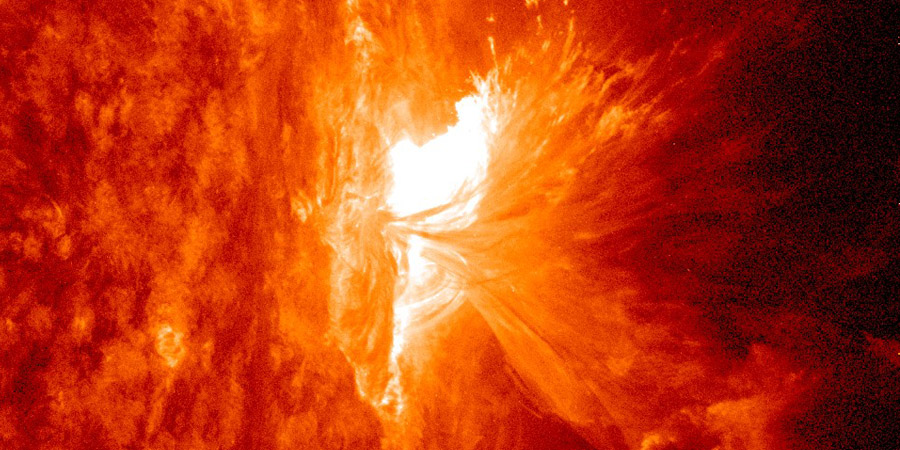Strong M-class flares, Coronal hole faces Earth
Saturday, 23 July 2016 17:30 UTC

A series of strong M-class solar flares took place this morning. Three of them to be precise. All of these solar flares peaked at the M5 class (R2-moderate) or higher.
These events were all concentrated around sunspot region 2567 which already produced two M-class solar flares (M1.0 and M1.2) just two days ago.
The first solar flare peaked today at 02:11 UTC and reached the M5.0 class. It was not eruptive. This solar flare was quickly followed by a solar flare that peaked twice in rapid succesion: M7.6 at 05:16 UTC and M5.5 at 05:31 UTC. This event was associated with a nice coronal mass ejection but it is directed away from our planet. Sunspot region 2567 is already close to the west limb so this shouldn't come as a surprise. Any future eruptions are also likely to be directed away from our planet.
ALERT: Type IV Radio Emission Begin Time: 2016 Jul 23 0529 UTC
ALERT: Type II Radio Emission Begin Time: 2016 Jul 23 0529 UTC Estimated Velocity: 729 km/s

Animation: the coronal mass ejection from this morning's double peaked M7/M5 solar flare as seen by NASA/ESA SOHO LASCO C2.
Apart from sunspot region 2567 and 2565, there are currently no numbered sunspot regions on the earth-facing solar disk. Once these sunspot regions rotate onto the farside of the solar disk we are likely again in for a period of very low (A and B-class) solar activity.
Coronal hole faces Earth
Our advanced space weather warning system also detected an earth-facing coronal hole today. It is rather tiny so only limited influence should be expected from it but it might still be something to keep an eye on in three days from now if you are a high latitude sky watcher.
A coronal hole is facing Earth. Enhanced solar wind could arrive in ~3 days - Follow live on https://t.co/T1Jkf6i4Cb pic.twitter.com/oP14URFeGr
— SpaceWeatherLive (@_SpaceWeather_) 23 juli 2016
Thank you for reading this article! Did you have any trouble with the technical terms used in this article? Our help section is the place to be where you can find in-depth articles, a FAQ and a list with common abbreviations. Still puzzled? Just post on our forum where we will help you the best we can!
Latest news
Latest forum messages
Support SpaceWeatherLive.com!
A lot of people come to SpaceWeatherLive to follow the Sun's activity or if there is aurora to be seen, but with more traffic comes higher server costs. Consider a donation if you enjoy SpaceWeatherLive so we can keep the website online!

Space weather facts
| Last X-flare | 2025/03/28 | X1.1 |
| Last M-flare | 2025/04/01 | M5.6 |
| Last geomagnetic storm | 2025/03/27 | Kp5 (G1) |
| Spotless days | |
|---|---|
| Last spotless day | 2022/06/08 |
| Monthly mean Sunspot Number | |
|---|---|
| February 2025 | 154.6 +17.6 |
| Last 30 days | 128.5 -22.7 |


